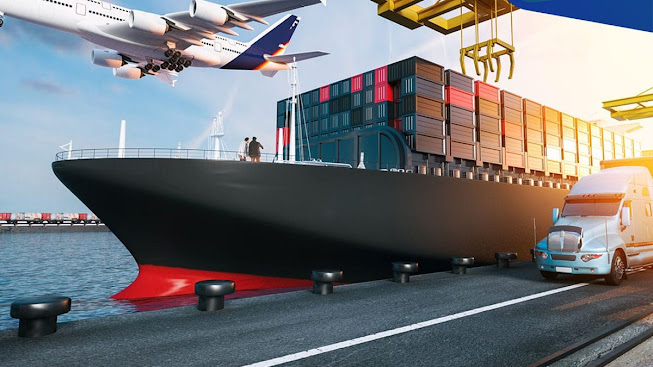Digital Twins in Cargo Warehousing: Revolutionizing Efficiency and Precision
In the ever-evolving landscape of cargo warehousing, where efficiency and precision are paramount, a cutting-edge technology known as "Digital Twins" is making waves. This transformative concept involves creating a digital replica of a physical warehouse, enabling real-time monitoring, analysis, and optimization. In this blog post, we will explore how Digital Twins are revolutionizing cargo warehousing, enhancing operations, and reshaping the future of logistics.
 |
| Digital Twins in Cargo Warehousing: Revolutionizing Efficiency and Precision |
- Digital Replica: A Digital Twin is a virtual representation of a physical object or system. In the context of cargo warehousing, it is a digital replica of the warehouse itself, including its layout, equipment, and inventory.
- Real-Time Data: Digital Twins are connected to sensors and data sources within the physical warehouse. They continuously receive real-time data, such as temperature, humidity, inventory levels, and equipment status.
- Simulation and Analysis: Using this real-time data, Digital Twins simulate and analyze various scenarios, allowing warehouse managers to make informed decisions and optimize operations.
Applications of Digital Twins in Cargo Warehousing:
- Inventory Management: Digital Twins provide real-time visibility into inventory levels and locations. This enables precise tracking of cargo, reducing the risk of misplaced or lost items.
- Layout Optimization: By simulating different warehouse layouts, Digital Twins help identify the most efficient arrangement of storage racks, conveyor systems, and equipment.
- Predictive Maintenance: Sensors within the warehouse feed data to the Digital Twin, allowing it to predict when equipment or machinery may require maintenance. This minimizes downtime and ensures smooth operations.
- Temperature and Humidity Control: Digital Twins monitor environmental conditions in real time. If temperature or humidity deviates from acceptable ranges, alerts are generated for immediate action.
- Supply Chain Simulation: Warehouse managers can use Digital Twins to simulate the impact of changes in the supply chain, such as variations in demand or transportation delays. This helps in proactive decision-making.
- Optimizing Labor Resources: By analyzing data on cargo movement and warehouse traffic, Digital Twins helps optimize labor allocation, reducing bottlenecks and wait times.
- Energy Efficiency: Digital Twins can optimize energy consumption by controlling lighting, HVAC systems, and other utilities based on real-time occupancy and environmental data.
Benefits of Digital Twins in Cargo Warehousing:
- Enhanced Efficiency: Digital Twins streamline operations, reduce waste, and increase overall efficiency, leading to faster cargo processing and shorter dwell times.
- Real-Time Decision-Making: Warehouse managers have access to real-time data and simulations, enabling them to make informed decisions quickly, even in dynamic environments.
- Improved Inventory Accuracy: Digital Twins provides accurate, up-to-the-minute inventory data, minimizing errors and ensuring precise order fulfillment.
- Cost Reduction: By optimizing layout, resource allocation, and energy usage, Digital Twins helps reduce operational costs and increase profitability.
- Proactive Maintenance: Predictive maintenance capabilities extend the lifespan of equipment, reduce maintenance costs, and prevent unexpected breakdowns.
Conclusion: The Warehouse of Tomorrow
Digital Twins have emerged as a game-changer in the world of cargo warehousing, ushering in a new era of efficiency, precision, and sustainability. As this technology continues to evolve, cargo warehouses equipped with Digital Twins will become more adaptable and resilient, capable of meeting the ever-growing demands of the global supply chain. The future of cargo warehousing is indeed digital, and Digital Twins are at the forefront of this transformation.



Comments
Post a Comment